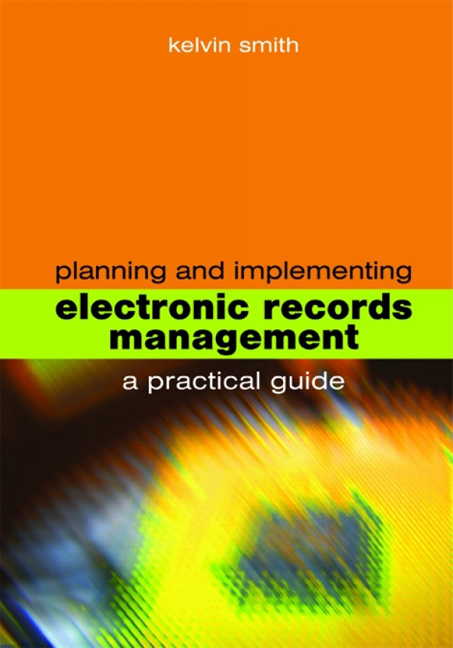12 - Procurement
from Part 3 - Implementation
Published online by Cambridge University Press: 08 June 2018
Summary
It is very likely that you will have a specialist procurement function in your organization and that you will be required to follow set procedures. The following pages are an attempt to describe some context to the activity, what to bear in mind when undertaking the procurement of such a major item as an electronic records management system and to point to the experience of other organizations that can be utilized. They also set out the kinds of questions you might ask suppliers of systems and examine the role that testing might play in the procurement process.
Procurement procedures
The acquisition of an electronic records management system would be described as indirect procurement in that it concerns the purchase of operating resources to enable an organization to undertake its functions. ‘Direct procurement’ is the term more often used for the purchase of items that are part of finished products (raw materials, parts, etc.) and is more common in manufacturing settings.
For such a large acquisition as an electronic records management system, procurement will certainly involve a bidding process. This will involve a number of specific steps:
1 business case (see Chapter 3)
2 requirements – see Part 2; see also reference to the requirements catalogue on page 174
3 specification – often defined as ‘a statement of needs to be satisfied by the procurement of external resources’ and sometimes known as the ‘statement of requirement’ or ‘operational requirement’. The purpose of the specification is to present prospective suppliers with a clear and accurate description of the organization's needs so that they can put forward their solution/proposal. The specification is likely to be drafted by the project team and signed off by the senior responsible officer (see roles and responsibilities in Chapter 11). It ought to be reviewed by a member or members of the project board to ensure that it is complete and accurate. Key points to consider in this review are:
—the document is compatible with the business case
—requirements are complete, accurate and unambiguous
—the requirement is deliverable
—issues and risks have been properly addressed
—stakeholders’ views have been taken into account
—future developments, including any business changes, have been taken into account.
- Type
- Chapter
- Information
- Planning and Implementing Electronic Records ManagementA practical guide, pp. 179 - 186Publisher: FacetPrint publication year: 2007



